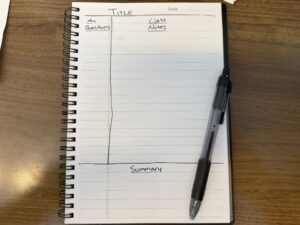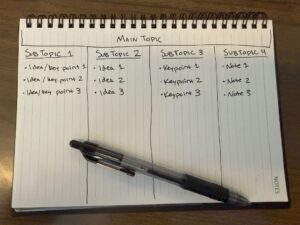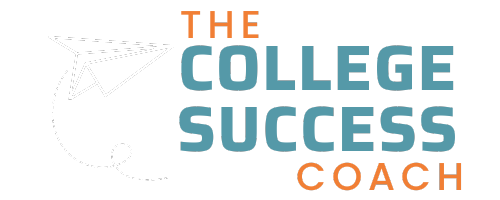Note Taking Methods to Do Better in College
College can feel like a whirlwind of information coming at you from all directions. Once you get to college, teaching styles shift and you’re expected to capture more on your own (see how the shift from a high school teacher to college professor changes the game). Between lectures, readings, and study sessions, you need reliable note taking methods to capture and organize it all. Finding the right note taking methods can make a world of difference, helping you stay focused and retain information better. And pairing powerful note taking strategies with a growth mindset can help you improve just 1% every day. In this article, we’ll dive into five proven note taking methods that can set you up for success in college.
1. The Cornell Note Taking Method
The Cornell method is a structured, highly effective system that works great for reviewing and organizing class notes. Here’s how it works:
Divide your paper into three sections: a narrow left column for key terms or questions, a large right column for notes, and a bottom section for summaries.
During class, take notes in the right-hand column. After class, write questions or key terms in the left-hand column that relate to the information you wrote down.
At the end of the day, review your notes and summarize the main points in the bottom section.
This method encourages frequent review and helps you actively engage with the material, making it one of the most effective note taking methods for students who want to maximize retention without spending hours re-reading notes.

2. The Outline Note Taking Method
The outline method is simple yet highly organized. It’s best for students who prefer a logical flow of information. Here’s how it works:
Start with the main topic at the top of the page.
Underneath, add subtopics using indents and bullet points to create a structured list of points covered during the lecture.
This method is one of the more traditional note taking methods and works well in classes with clear, organized content (like history or psychology). It helps you create a visual hierarchy of information, making it easier to review later. It’s also one of the easiest methods if you are taking notes on a laptop during class. Here’s an example:
Main Topic
1. Subtopic
a. Detail
b. Detail
2. Subtopic
a. Detail
b. Detail
3. The Mind Mapping Note Taking Method
If you’re more of a visual learner, mind mapping could be your best friend. This method involves drawing a visual representation of concepts and how they connect.
Here’s how it works:
Write the main topic in the center of your page.
Draw lines radiating outward, connecting the key points that relate to the topic.
Keep branching out with subpoints, using different colors and shapes to emphasize connections between ideas.
Among the various note taking methods, mind maps are particularly effective for subjects like philosophy, literature, or any course that requires understanding complex relationships between ideas. They also make reviewing for exams much easier because you can quickly see how concepts fit together. This method often works well when reviewing your notes in class and trying to get the big picture.

4. The Charting Note Taking Method
For students who thrive on organization and need a bird’s-eye view of complex information, the charting method works wonders. This method breaks down information into rows and columns, making it perfect for subjects like science, history, or economics, where you need to compare multiple sets of data.
This is one of the note taking methods that shines when it comes to comparing different pieces of information. It helps simplify what might otherwise be overwhelming data.

5. The Sentence Note Taking Method
The sentence method is a quick and easy way to jot down information, especially during fast-paced lectures. It’s a straightforward method where you simply write every new idea or fact as a separate sentence. Each sentence represents a new thought.
While this method might not be as organized as the other note taking methods, it’s a great choice for those who need to capture a lot of information quickly. You can always go back later to reorganize your notes or expand on them. I recommend doing this if you have a laptop in class and can type quickly or have a system of shorthand that you can write quickly and understand later when you review your notes.
I use my own shorthand method which is really just abbreviations for common words. “Physical” became “phys.” “Psychological” or “Psychology” became “psy.” And everyday words like “the” were simply “t.” Play around with your own shorthand and see what works for you. Just make sure it’s something you are sure you will understand later!
Which Note Taking Method Should You Use?
There’s no one-size-fits-all when it comes to note taking methods. It’s important to find a style that fits both the class format and your learning style. If you’re a visual learner, try mind mapping. If you need structure, the Cornell or outline methods could be your best bet. The key is to experiment and find what works best for each type of class you take.
Once you pick a method, you’ll need to schedule regular review time — check out our Time Management Tips post to help you actually build that into your week.
Remember, effective note-taking is a skill that takes time to refine. Once you find your groove, you’ll not only retain information better but also make studying for exams a lot less stressful. Try one of these note taking methods for your next class and see how it transforms your learning! Also try to balance your study habits with wellness habits — check out our How to Be Happy & Healthy in College resources for tips.
At The College Success Coach, we believe that mastering your study habits is one of the keys to thriving in college. Finding the right note taking methods can help reduce overwhelm, keep you organized, and give you a solid foundation for academic success. Want more tips? Download our Freshman Year Success Checklist to ensure you’re set up for an amazing college journey!

Freshman Year Success Checklist






0 Comments